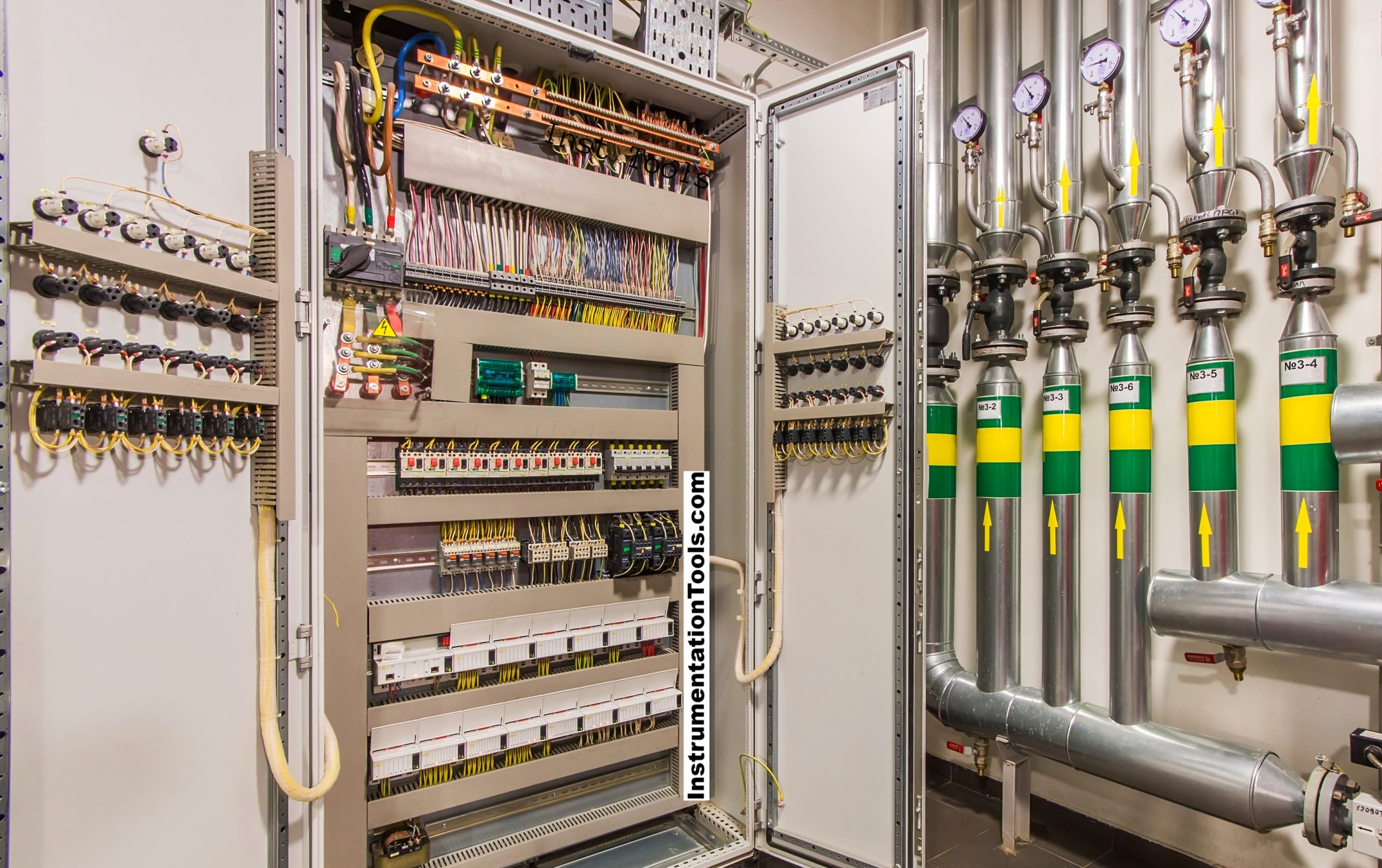In an electrical panel, one of the most problem-giving means is heating. As electrical components run inside a panel, they discharge heat over a period of time. This happens due to current consumption and as we know, current throws thermal energy outside when in a large rating.

The heating issue cannot be observed mostly in smaller electrical panels but is observed generally in panels where current consumption is large. Overheating after a period of time can damage the electrical components or burn wires inside.
So, cooling methods must be adopted in electrical panels to control the heat. One such method used in panel cooling is using air conditioners. In this post, we will see the concept of air conditioners in panel enclosures.
First of all, let us understand why cooling is required in a panel enclosure. As you know, electronic and electrical devices have operating temperature ranges written on their nameplates. When a device is operated in that range, it functions for a good lifetime span.
But, if the device is operated at high temperatures for a long time, it can cause various types of faults like overload, internal burning of components, and breakdown of components. This high temperature is not good for devices inside the panel. Increasing device failures also cause an increase in maintenance costs.
So, cooling methods must be done in panel enclosures to increase the lifetime of devices and maintain the operation under control for a long time. There are many methods to cool a panel like natural convection cooling, forced convection cooling, air conditioning, heat exchangers, vortex cooling, thermoelectric cooling, etc. Out of these, we will discuss air conditioning in this post.
Air conditioning is a type of closed-loop control. Basically, it monitors outlet temperature and accordingly, operates the compressor and condenser fans. Usually, condenser fans are on continuously, but the compressor is the one that controls temperature by loading and unloading the refrigerant gas inside the circuit. This gas flow is responsible for efficient heat exchange between inlet temperature and outlet temperature. This same principle works for a panel enclosure AC (air conditioner).
The AC is mounted on the side of the enclosure panel. The temperature inside the panel is monitored continuously. When the temperature rises, the compressor will increase the loading of gas to bring down the temperature, by exchanging hot inside air with the outside air.
When the temperature decreases, the compressor performs unloading of gas to bring the temperature up by exchanging cold air with the outside air. Air must not be too cool or too hot, as any extreme condition can damage the components.
Now that our concept of air conditioning is clear, we will see how to calculate the airflow inside the panel for designing the AC circuit.
Consider the following parameters for calculation:
It is necessary to understand that the maximum ambient temperature must always be higher than the maximum enclosure temperature inside. This is because heat exchange takes place by taking cooler air from outside and if the ambient temperature is only hotter, then the heat exchange will not take place effectively.
So, to select the best air conditioner system, the delta temperature must be related to the cooling capacity of the AC unit. If the difference is higher than the cooling capacity, then it means the AC unit will perform within its limit by providing efficient heat exchange.
Read Next:
In this post, we will learn the basic requirements for a network switch to be…
The PLC panel and MCC panel interface signals are start, stop, run feedback, trip, local…
In this article, we are going to discuss about shutter door control using induction motor…
Electrical Drives control the motion of electric motors. Motion control is required in industrial and…
PLC ladder logic design to control 3 motors with toggle switch and explain the program…
VFD simulator download: Master the online tool from the Yaskawa V1000 & programming software for…